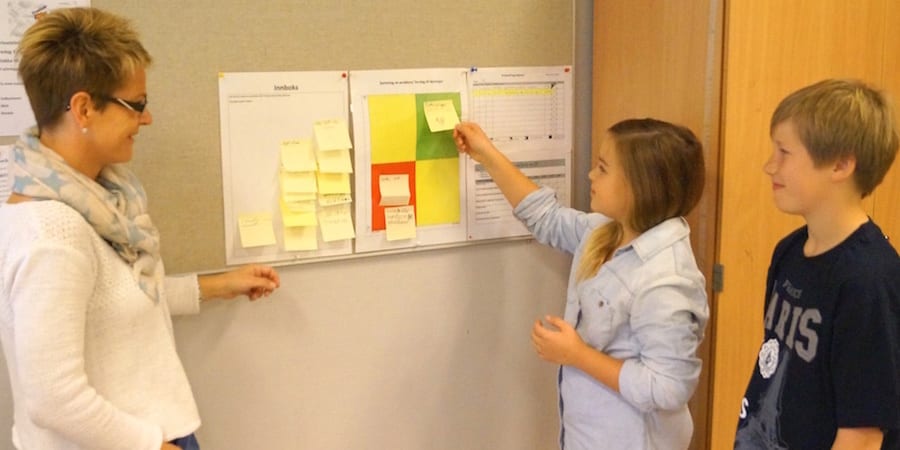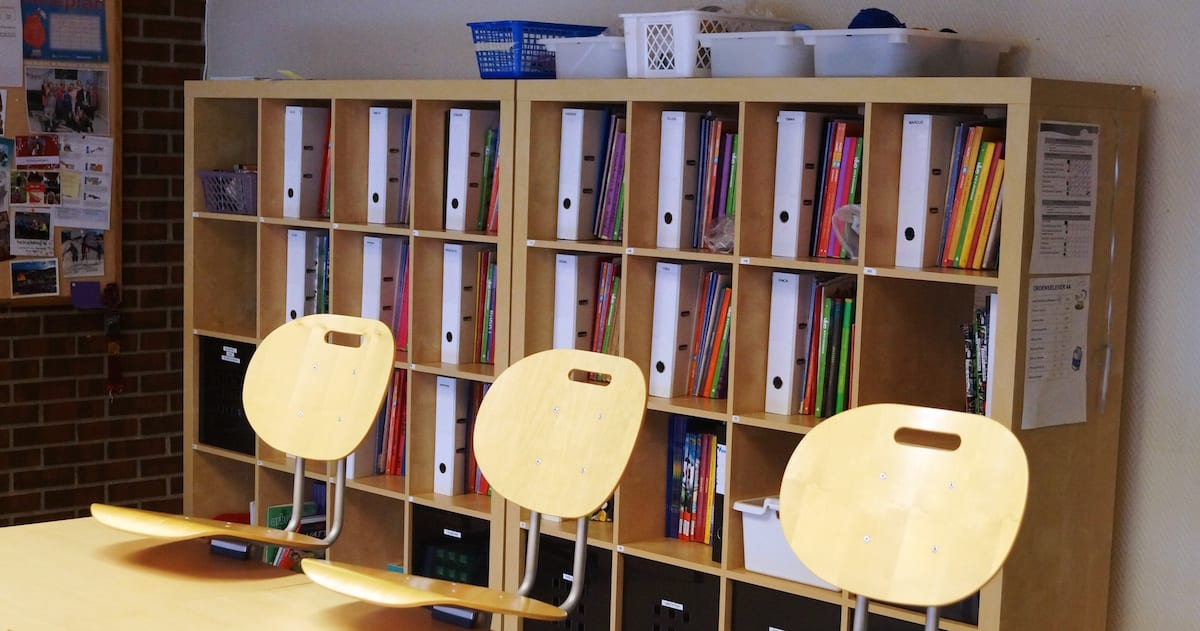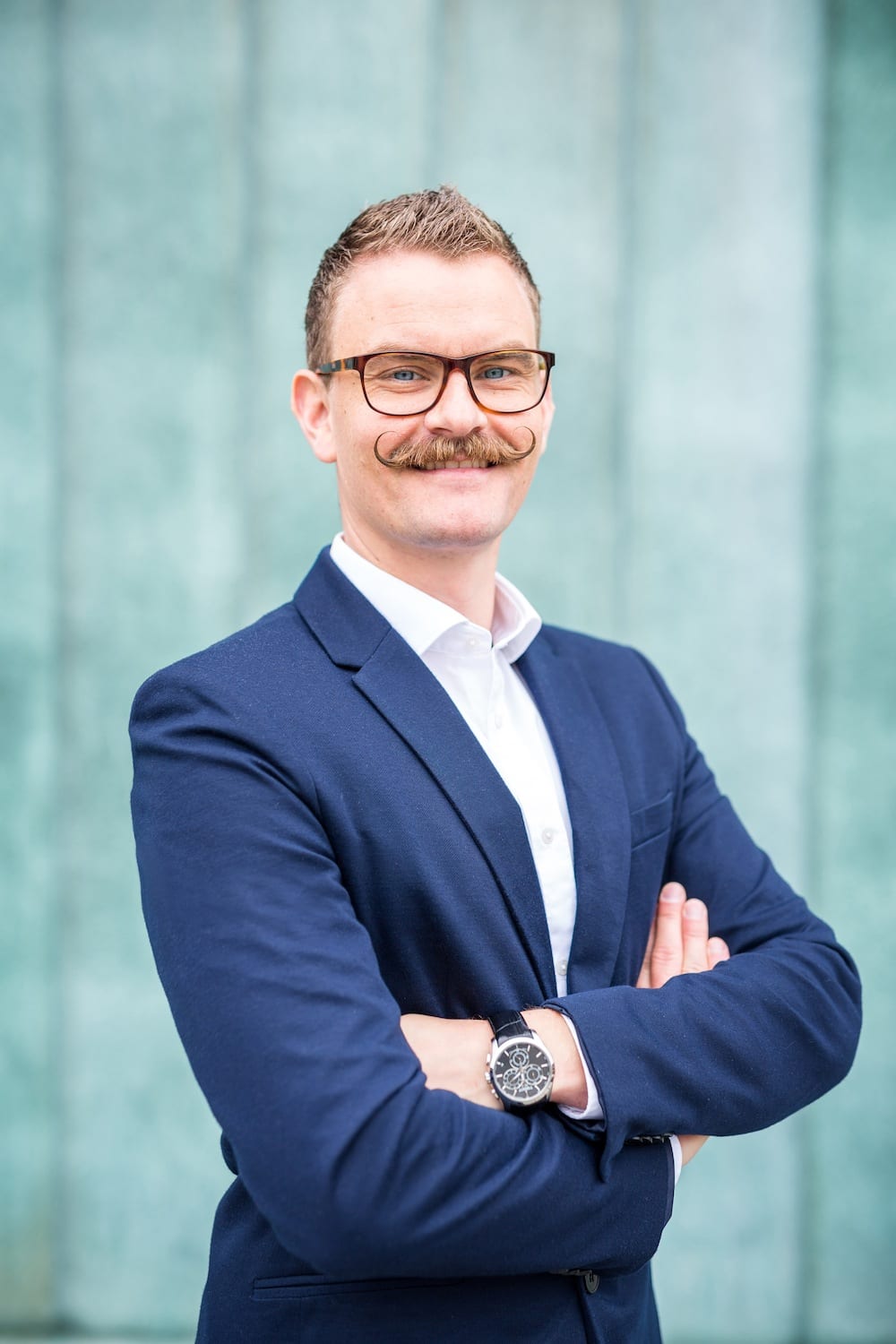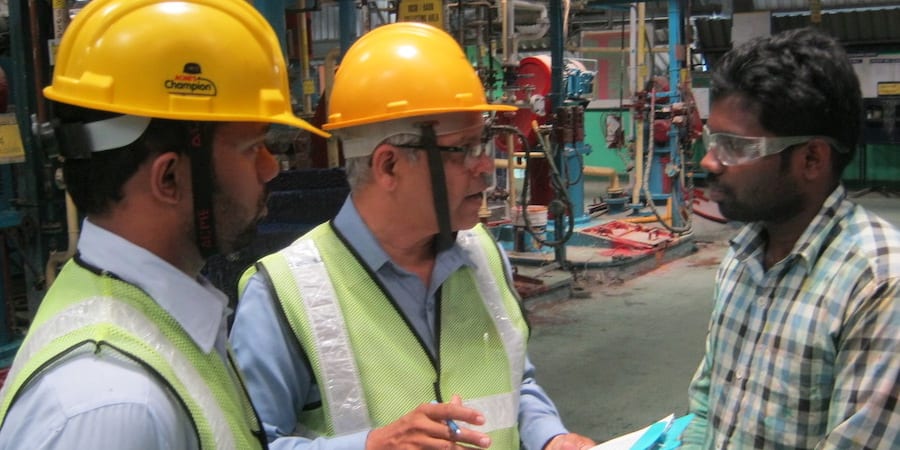
Lean management in a primary school in Norway
CASE STUDY - A pioneering school in Rogaland, Norway, is proving that some elements of lean thinking can successfully be adapted to the education system to create better conditions for both teaching and learning.
Words: Torbjørn Netland
Lean is an alternative management model that traditionally has not been a top concern for the education system. Our schools are focused (quite rightly so) on the growth of pupils and on making the most of the teaching resources available. Nowadays, however, they tend to see demand continuously rising, but funding increasingly scarce. Could lean thinking, with its focus on productivity and quality improvement and efficiency, have something to offer our public primary schools?
I recently visited Baerland Skole outside Stavanger, perhaps the only primary school (of almost 3,000) in Norway to have made a serious attempt at learning from lean thinking. There are a few others around the world, of course, but the fact remains that most schools would not turn to the industrial sector for advice on how to improve the efficiency of teaching.
Many teachers simply reject the idea of learning from the automotive industry, where high-speed assembly lines and standardized work procedures represent a very different environment than a primary school. Yet, it is now recognized that lean thinking principles can actually apply to pretty much any circumstance. Perhaps skeptics would change their minds if they saw what Baerland Primary School is doing.

Baerland Primary School employs 25 teachers and 10 teaching assistants, who teach about 300 children from first to seventh grade. The school certainly doesn’t look like a factory, but as a matter of fact Rector Tom Gilje first got the idea of applying lean principles at his school during a discussion with some of his family members who are working with lean in industry.
In 2012, he invited his employees to join him on a study trip to Roskilde, Denmark, to learn more about what lean could potentially offer a public school (and the education sector). He believes that “the commitment of the teachers was absolutely crucial for the introduction of lean in our school.” The first question to answer collectively was why their school should look to Toyota for change in the first place? Together, the teachers at Baerland agreed on two main objectives for their lean implementation:
- Increase the learning output for the pupils. Provide pupils with more time for learning, teachers with more time for teaching, and increase the quality of teaching.
- Improve the working environment for the teachers. Create a more attractive working environment at the school and remove “time thieves” in administration of classes.
In other words, the purpose of applying lean at Baerland Primary School was simply a noble attempt to “produce learning more effectively and efficiently.” The first steps included lean training for a smaller team of teachers with a local lean consultancy, and a pilot implementation. Today, Baerland Primary School is particularly focusing on three lean practices:
- “5S” workplace organization;
- Continuous improvement;
- Standardization of best practices of teaching.
WORKPLACE ORGANIZATION
5S starts with the teacher, not the pupil.
It is more than just cleaning up; it is about maintaining an organized and efficient workspace without clutter and waste of time for searching and preparations. 5S meets additional challenges in a school setting because the school is a public place with many users. For example, after the ordinary school day, there can be after-school care, cultural school, public events, sport events, and other meetings and events. Each of these comes with its own unique requirements (e.g. room layout) and materials, and – not to forget – users are mostly children.
Without proper and intuitive 5S systems, schools can quickly become a haven for waste. Baerland Primary School uses tape markings and visual instructions (“one point lessons”) to keep the school in an orderly state. “5S is more than cleaning up in a closet,” explains Rector Gilje, “it also challenges whether the closet is needed or not.” Baerland has also implemented a simple solution for not accumulating material and waste over time: when a thing is not used for a while it will be marked with a date and moved to the “The final resting place?” – a physical place where unutilized objects are kept for a few days before being removed from the school if not claimed. A result of these activities has been that Baerland has now turned into a particularly attractive school.

CONTINUOUS IMPROVEMENT
Every morning, all Baerland employees gather for a five-minute morning meeting. These meetings focus on operational tasks and enable quick problem solving. The employees also hold weekly improvement meetings in front of visual team boards showing key performance indicators. Improvement suggestions and complaints are raised using post-it notes. Baerland Primary School has also experimented with value stream mapping (for the development process of local curricula) and uses A3 thinking for efficient communication and problem solving.
Children also take part in improvement activities. At the school “class councils” have been replaced by “class improvement meetings” (from the 4th grade onwards). These meetings take place in front of visual improvement boards. So far, the school has implemented more than 1,200 improvement suggestions. The focus is on getting a little better every day.
STANDARDS FOR TEACHING
The most challenging lean practice to implement at Baerland Primary School has been standardization.
Many teachers were afraid that standardization would kill creativity and wouldn’t allow them to accommodate the needs of a dynamic and unique classroom with all its different individuals. It is easy to understand their worry if we envision a Toyota assembly line as the goal for standardization in the school. However, Baerland is not aiming to reach the extent of standardization that Toyota implements. Instead, the school is trying to get agreement on some common practices for teaching (for example, how to start and end a class effectively), with the ultimate objective of increasing the quality of education.
“Our sector has always been all about the individual teachers,” explains Rector Gilje. “We need to go from my plan to our plan.” Teachers are now encouraged to share best practice with one another with the purpose of improving the overall learning experience for the pupils. From a child’s perspective, follow the teaching might be easier if the approaches were more coordinated. The best teachers should not keep tips and recommendations on teaching to themselves in order to remain the most popular among educators at the school, but make their extraordinary teaching skills explicit so others can learn. The point is to make the “desired standards of teaching” clear so one can learn from simply paying attention to them, and improve the quality of teaching by experimenting with deviation from them.
LOOKING AHEAD
Baerland Primary School wants to become one of Norway’s best schools within spring 2019. Gilje and his colleagues believe that the tailored lean program at Baerland can help to create the ideal conditions for good teaching to thrive, but they also know that lean is not enough in itself to improve learning outcomes.
Rector Gilje summarizes his experiences so far: “I believe it will be a few years before we see a clear improvement in learning outcomes. But at least we have already achieved more efficient administrative operations, a better-organized workplace, and the teachers are generally happy with the changes.”
To conclude, successfully applying lean in a primary school requires the careful selection and adaptation of a number of lean principles and practices. I believe that in that regard Baerland Primary School is a very good example. They understand that the pupils are neither “customers” nor “products” in the traditional sense of the terms (both are common misunderstandings in lean implementations in education). They are not customers because they co-create learning with the teacher (in other words, they are part of the value-creating system), and they are certainly not products that should be fitted with knowledge in the same way that parts are assembled to a chassis in a car plant. Of course, applying lean thinking in a school is not the same as applying it in automotive, but that doesn’t mean that the education sector cannot find inspiration on how to improve productivity from what is still the most competitive industry in the world. Wouldn’t the future be better if we improved the efficiency of our teaching and learning?
THE AUTHOR

Read more


RESEARCH - Offering us a glimpse into how the human mind works and into Toyota's approach to people engagement, this article tells us how to create a better working environment for our employees.


FEATURE – When they realized their lean efforts had overlooked the crucial aspect of management behavior, AkzoNobel senior leaders turned to a great lean book for help with leadership development.


FEATURE – Our coverage of the Covid-19 emergency continues with an article discussing how lean healthcare principles can support and protect the professionals at the front line of this war.


CASE STUDY – An insurance company in São Paulo is experiencing a complete turnaround driven by a very capable Lean Office that understands its role is to gradually make people autonomous.

